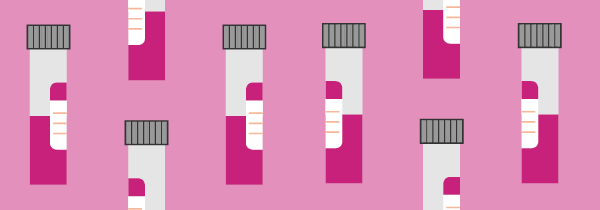Pubic Lice
Pubic lice, also known as crabs, are tiny insects (about 2mm long) that live in body hair and are spread by close physical contact.
It can take up to three weeks after coming into contact with pubic lice before you notice any symptoms.
How are they caught?
Pubic lice are not linked to poor personal hygiene. They are spread through close body contact with someone who has them.
The lice crawl from hair to hair but cannot fly or jump. They need human blood to survive, so generally only leave the body to move from one person to another. They do not live on other animals such as cats or dogs.
Pubic lice are most commonly passed on during sexual contact. Condoms will not prevent them from being passed to another person.
It is also possible for pubic lice to be spread through sharing clothes, towels and bedding.
Symptoms
The most common symptom of pubic lice is itchy red spots. The itching is caused by an allergy to the louse saliva or poo. It can take one to three weeks for itching to develop after the first infestation, and it will usually be worse at night.
Adult pubic lice are tiny - smaller than a match head. They have pincer like legs which they use to grasp onto your hair. Pubic lice eggs are tiny, yellow-white ovals, which are stuck firmly to the base of your hairs.
You may also notice the following symptoms:
- Dark brown or black powder on your skin or in your underwear (this is louse droppings)
- Blue spots on your skin where the lice are living, particularly on your thighs and lower abdomen (caused by bites from the lice)
- Specks of blood in your underwear, if you have been scratching a lot
- Nits (empty eggshells) that look like white oval dots attached to the base of your hairs
Testing
There is no test for lice, but you may see the lice crawling in your body hair and your GP or sexual health clinic will look for visible evidence of the lice. Some sexual health clinics can find the lice and look at them under a microscope.
Remember, pubic lice may not be very pleasant but they don't cause long-term harm and are easy to identify. Skin irritation and scratching may lead to skin infections and if the lice infect your eyelashes you may get eye infections, however once they have been treated there are no lasting complications.
Treatment
Pubic lice can be treated at home with insecticidal lotion or cream. This will usually need to be applied only once and repeated after seven days if needed. Everyone that you have had close body contact with should be treated at the same time. This includes current sexual partners and may include members of your household.
Some pubic lice can be resistant to treatment meaning that it may not work. If this is the case, you may need to try a different type of treatment. The sexual health service can advise you of suitable alternatives if your initial treatment doesn't appear to have worked.
Pubic lice can also live on the eyelashes or eyebrows. This is because the thickness of these hairs is similar to pubic hair meaning that the lice can successfully grip on. Treatment of lice
in the eye area is usually different to elsewhere as certain insecticidal creams or lotions are not safe for use near the eye area. Lice here can be removed with tweezers or Vaseline can be used to suffocate the lice prior to removal
How do you avoid catching pubic lice?
Pubic lice are easily spread, and condoms don’t protect against them. The only thing that can reduce your risk of getting pubic lice is limiting the number of people with whom you have intimate or sexual contact.
If you or your partner has pubic lice, avoid having sex (vaginal, anal or oral) or close bodily contact until you both have finished the course of treatment, including any follow-up treatment. This is to avoid re-infection or passing the infection on to someone else.
For more information please see:

